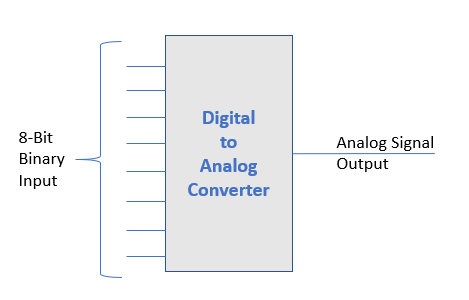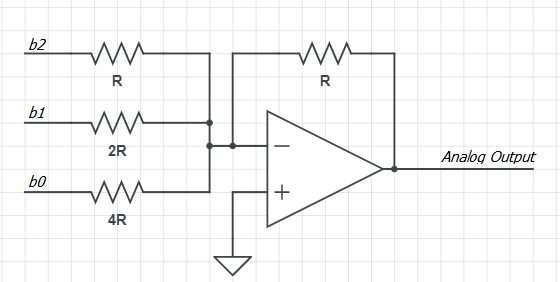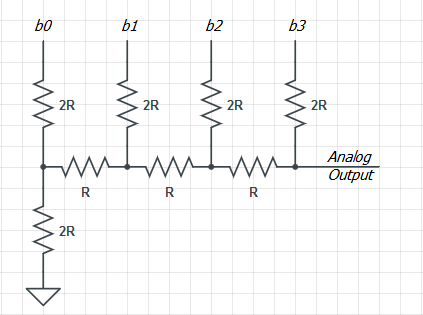Digital to Analog Converter Basics
25/06/2019, hardwarebee
Our modern world comprises of two distinct parts: the natural (analog) and the digital. Both aspects of life and reality has its very own language. A language that only its own elements understand and can interpret.
A digital to analog converter is the missing link that helps us bridge across the two domains. Most of the signals that we find in nature, or, are produced by the products of nature are analog. On the other hand, electronic signals tend to be digital. Our computer systems and networks can only understand information when you feed it to them in the form of binary numbers.
Digital to Analog converters, or DACs, are very commonly used across a multitude of electronic products and are a key component on our everyday lives. In this article, we will explore the basics of digital to analog converters, how exactly they work, the different types of digital to analog converters that are available in the market today, and where each of them is used in the field.
Let’s take a deeper dive into the basics and application of digital to analog converters and the purposes for which you can use them, and they already are used today:
Digital to Analog Basics
As suggested by the name, the purpose of a digital to analog converter serves to convert a digital signal into an analog signal. This means that it takes input in the form of a digital binary signal from a computer chip and then converts it into an analog output. The output can be in the form of any analog signal which can take many presentations such as visuals or audio.
Digital to Analog Basic Operation
The conversion of the digital signal into an analog one is performed by an electronic circuit. The input is received in a binary form and the output yielded is in the form of an electrical current or voltage that manifests as an analog presentation. The digital data that is being used an input can be produced by an ASIC, an FPGA, or any other microprocessor.
One of the most commonly seen and used applications of a digital to analog converter is that is music players. These devices take in streams and waves of digital data and then convert them into analog audio signals. The same process takes place in television systems as well as mobile phones where digital inputs are converted into visual or audio outputs.
While the purpose of the converter used in either of the above-mentioned systems is primarily the same, which is to convert digital signals into analog ones, the kind used is completely different. A DAC is defined by certain parameters and its capability pertaining to these specific parameters determines the application they are best suited for. These parameters include resolution and frequency. Where the audio output would require a high resolution but low frequency type of converter, a video or visual output will require high frequency and low resolution.
Types of Digital to Analog Converters
There are two primary methods using which a digital to analog converter (DAC) can perform to digital to analog conversion:
Digital to Analog Converter using the Summing Amplifier
A binary weighted input digital to analog converter is a summing circuit. It adds the inputs that are contributed by the digital bits of incoming data using an inverting summing amplifier. The resistors in the circuit are weighted in a binary format meaning if they receive an input of 1, the switch connects the resistor to the reference voltage whereas an input of 0 connects it to the ground terminal. However, with increasing bits of data, the accuracy of this system becomes rather poor.
R-2R Binary Ladder Digital to Analog Converter
This digital to analog converter is one the simplest solution which is based on resistors only. The system is relatively more simple then other digital to analog converters as it uses a repeating cascade structure of R and 2R resistor values, creating a ladder. This resistor ladder network converts a digital binary data (b0, b1, etc) into an analog output. Each digital input contributes it weight into the resistor ladder to the analog output.
Digital to Analog Applications
You will be surprised at just how widely digital to analog converters are used in real time applications. One of the most widely used and recognizable applications of this useful piece of tech is its use in music players and audio amplifiers. It converts digital files of music into actual, analog music waves for you to be able to listen.
Likewise, these are also found in video encoders and mobile phones where a digital video file is converted into analog video signals for you to be able to watch a film. These are also used in televisions and other graphic displays where the graphic controller most likely uses a digital to analog converters to generate analog signals pertaining to the red, green, and blue colors so that it can produce an image on the screen as it interprets a digital signal.
Apart from audio and visual systems, the digital to analog converters also find their use in the likes of data distribution systems, where a multiplexed set of DACs is used to produce multiple programmable voltage sources, as well as for motor control purposes as it allows you to manipulate and control the voltage signals it produces as its analog output.














